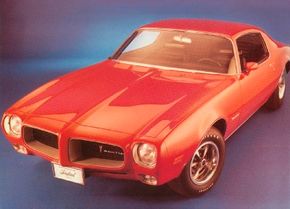Bill Mitchell, GM's design chief, had complained that the first Firebird "had no real identity." This was not the case with the 1970 1/2 Pontiac Firebird.
Pontiac Firebird Image Gallery
Advertisement
Relying on its drawn-out profile rather than chrome doodads to attract attention, the semi-fastback hardtop coupe wore vast B-pillars, extra-long doors, and a low cowl with concealed wipers.
The body-colored "Endura" plastic front end contained a bumper surrounding recessed grille inserts. Single headlamps sat apart. Road & Track opined that "GM stylists seem to have a way with detailing that is unmatched in the U.S. car industry."
Pontiac launched a four-model lineup: base, Esprit, Formula 400, and Trans Am. Base coupes ran with a 155 horsepower, 250-cid Chevrolet-built six. Both 350-and 400-cubic-inch V-8s were optional. Stepping up from base level was the amply-trimmed Esprit with a 350 V-8, floor gearshift, and deluxe interior.
Packing a 330 horsepower, 400-cid V-8 with dual exhausts, the Formula 400 Firebird served as a stepping stone to high performance. Formula gear included wider tires and stiffer suspension, along with twin molded scoops in a fiberglass hood.

Again white with blue stripes, the brutish Pontiac Firebird Trans Am held a 345-horsepower Ram Air 400 V-8, snorting through a rear-facing "shaker" hood scoop. While not the best aerodynamic choice, that scoop would remain a Trans Am trademark for many years to come.
For $4305, Trans Am buyers got a wide-ratio four-speed, variable-ratio power steering, front disc brakes, toughened suspension with bigger roll bars, and 15-inch tires. Also included were racing graphics, air dam, multiple spoilers, front-fender air extractors, and engine-turned instrument panel -- all standard. "All that equipment works," Pontiac insisted. "Really works."
Advertisement
